Exploring the Impact of Disposable Grow Bags
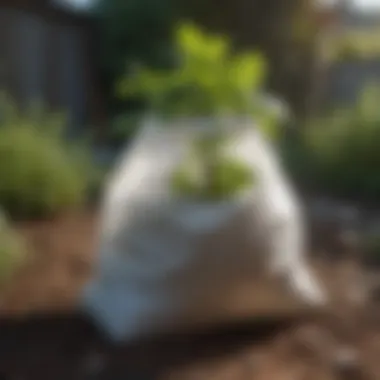
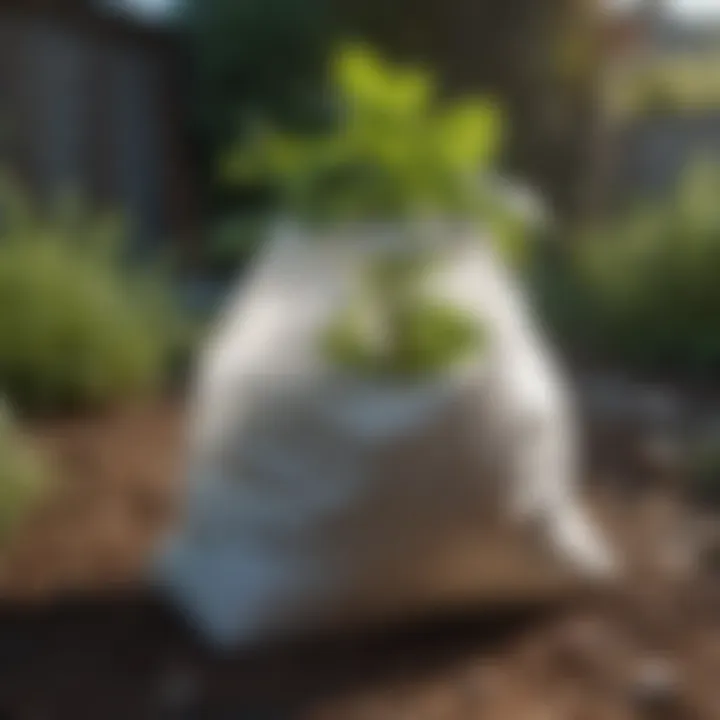
Intro
Disposable grow bags have been gaining traction in both agriculture and horticulture sectors in recent years. Their rising popularity reflects a broader shift towards sustainable practices in cultivation. Farmers and gardening enthusiasts are increasingly looking for efficient, eco-friendly solutions to enhance their yields while minimizing environmental impact. This article takes a nuanced look at disposable grow bags, from understanding their definition and importance to exploring advanced techniques and real-world applications.
Topic Overview
Definition and Importance
Disposable grow bags are essentially containers designed specifically for growing plants without the need for traditional pots. Composed of various lightweight, biodegradable materials, these bags provide excellent aeration and drainage. Their significance lies not only in their functionality but also in their environmental promise. Unlike conventional plastic pots, which can take hundreds of years to decompose, disposable grow bags break down naturally, reducing waste and contributing positively to soil health.
Brief History and Evolution
The concept of using bags for growing plants isn't new, as early agronomists utilized various forms of containers. However, the modern-day disposable grow bags have undergone significant transformation since they first emerged in the late 20th century. Initially made from limited materials, they now incorporate advanced fabrics that allow for improved breathability and moisture retention. Over time, these products have evolved alongside the push for organic farming and sustainable agriculture, making them an appealing choice for eco-conscious growers.
Key Techniques and Innovations
Sustainable Farming Practices
Implementing disposable grow bags aligns well with the principles of sustainable farming. By utilizing these bags, farmers can optimize space and reduce soil erosion, thus enhancing productivity while keeping ecological considerations in mind. The lightweight nature of these bags allows for easier transport and management, reducing the physical strain on farmers. Moreover, they conserve water through better drainage, which is vital in regions facing water scarcity.
Advanced Agronomic Technologies
Recent innovations in agronomy have led to the production of specialized grow bags that incorporate smart technologies. For example, some bags are embedded with sensors that monitor soil moisture levels and nutrient availability. This data can be invaluable for farmers seeking to maximize their inputs while reducing waste. Integrating such technologies not only promotes better crop management but also underscores the shift towards precision agriculture.
Practical Applications
Step-by-Step Guides
When considering adopting disposable grow bags, farmers can follow these steps to ensure optimal results:
- Selection of the Appropriate Grow Bag: Choose bags that suit the specific crop type, considering environmental factors and growth requirements.
- Preparation of the Bag: Fill the grow bag with a suitable growing medium, ensuring adequate drainage holes if necessary.
- Planting: Place seeds or seedlings into the grow bag, following recommended planting depths for the selected crops.
- Maintenance: Regularly monitor moisture levels and apply fertilizers as needed, leveraging the advantages of quick drainage and aeration.
- Harvesting: Once crops mature, harvesting becomes easier as the bags can be cut open, allowing for gentle removal of the plants.
Case Studies or Real-World Examples
Several success stories highlight the effectiveness of disposable grow bags. For instance, a community garden in Chicago adopted these bags to maximize yield in limited space, producing an impressive variety of vegetables despite the urban setting. Farmers in rural India have similarly reaped the benefits, using disposable grow bags for growing vegetables on hilly terrains where traditional farming is challenging due to erosion.
"The transition to disposable grow bags has not only increased our crop yield but also fostered greater community involvement in sustainable practices." - A Chicago Community Gardener
Preface to Disposable Grow Bags
In the ever-evolving landscape of agriculture and horticulture, disposable grow bags have emerged as a significant innovation. The growing demand for efficient, cost-effective, and environmentally-friendly planting solutions speaks to their relevance in contemporary farming practices. With urban gardening on the rise and the necessity for sustainable methods becoming more pronounced, understanding disposable grow bags is vital for both seasoned farmers and novices alike.
These bags provide an alternative to traditional planting methods and are tailored to meet specific needs, such as enhanced drainage, portability, and disease resistance. As we proceed through this article, we will uncover the myriad advantages and potential considerations that come with using disposable grow bags in various agricultural contexts.
Defining Disposable Grow Bags
So, what exactly are disposable grow bags? Essentially, they are lightweight planting containers made from a variety of materials designed for single-use. These bags are typically utilized for growing plants in a controlled environment. The concept combines functionality with convenience, allowing for easy handling and disposal.
They come in various shapes and sizes, catering to different plant types and growth stages. Contrary to traditional pots, these bags are often crafted to enhance root development through improved aeration. This feature prevents root circling and promotes healthier growth overall.
While many might view them as a recent trend, they are not without their merits and distinct characteristics that distinguish them from conventional planting methods.
Historical Context and Evolution
Historically, the journey of disposable grow bags can be traced back to the increasing need for practicality in gardening. Traditionally, farmers relied heavily on pots and open fields, but various environmental factors and the challenge of soil-borne diseases prompted a reevaluation of these methods.
With advances in materials science and an awareness of ecological concerns, the concept of disposable grow bags began to take shape. They gained traction in many sectors, including home gardening and urban agriculture! As cities expanded and more people were drawn to gardening, especially in limited spaces, these bags proved to be a game changer.
While once viewed skeptically by traditionalists, the evolution of disposable grow bags has shown their potential to address modern agricultural challenges. Not only have they adapted to fit contemporary farming practices, but they have also established a foothold in sustainable cultivation methods.
In sum, understanding disposable grow bags through their definition and historical context provides a lens to appreciate their growing importance in today’s agricultural landscape.
Materials and Construction
The choice of materials and construction techniques in disposable grow bags is a fundamental aspect that greatly influences their performance and utility in both home gardening and professional agriculture. Understanding the materials used opens a window into their functionality, durability, and overall impact on plant growth. Various materials not only affect the structure but also the grow bag's environmental footprint, making this an essential topic for anyone interested in sustainable farming practices.
Types of Materials Used
Disposable grow bags are primarily made from a range of materials that cater to different cultivation needs. Here are some of the most commonly used materials in the manufacturing of these bags:
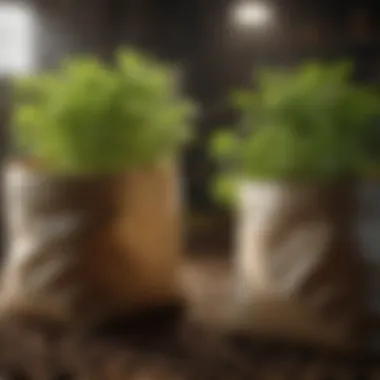

- Non-Woven Fabric: This is perhaps the most widely utilized material for disposable grow bags. It offers excellent breathability, which facilitates better aeration and drainage. Because of its porous nature, it helps prevent overwatering. This is critical since excess water can lead to root rot, especially in sensitive plants.
- Biodegradable Plastics: These materials are designed to break down more quickly than traditional plastic. Typically made from plant-based resources, biodegradable plastics offer a more eco-friendly option for growers concerned about their environmental impact. They decompose over time, enriching the soil instead of contributing to landfill waste.
- Paper and Cardboard: Some disposable grow bags are constructed from paper or cardboard, providing a lightweight and biodegradable choice. While their durability may be less than synthetic options, they serve well for short-term growing needs and can effectively retain moisture.
- Recycled Materials: A growing trend is the use of recycled plastics to manufacture grow bags. This not only diverts waste from landfills but also provides a sustainable choice without sacrificing performance.
Each material comes with its benefits and limitations. For instance, while non-woven fabrics are great for aeration, they may not be as effective at water retention compared to other materials. It’s vital for growers to assess their specific needs to select the most appropriate type.
Manufacturing Processes
The way disposable grow bags are manufactured plays a role in their effectiveness and sustainability. Different manufacturing processes can make significant differences in product quality. Here’s an insight into some key processes:
- Heat Sealing: Used primarily in the creation of non-woven fabric bags, this process involves combining materials through heat. This method ensures that the seams are sealed tightly, thus enhancing the bag's durability and resistance to tearing.
- Injection Molding: When working with biodegradable plastics, injection molding may be employed. This method offers precision in creating various shapes and sizes for different planting needs. Although initially more expensive, the long-term benefits can offset the costs through effective plant growth.
- Punching and Cutting: For paper and cardboard bags, companies often cut and punch holes for drainage during the production phase, ensuring that water management is a breeze when these bags are put to use.
- Recycling Processes: For manufacturers using recycled materials, the process begins with collecting and processing old plastic. This includes cleaning and shredding the plastic, which is then melted down and reformed into new grow bags, reducing environmental impact substantially.
Understanding these materials and manufacturing procedures enlightens growers about what each disposable grow bag brings to the table. In this day and age, where sustainability and efficiency walk hand in hand, having a thorough grasp of these elements can elevate one's gardening practices.
"The materials and construction techniques employed in disposable grow bags are not just an afterthought; they shape the very foundation of successful, sustainable agriculture."
By considering the elements above, both novice and seasoned growers can make informed choices that yield better results and foster more sustainable practices in their agricultural endeavors.
Benefits of Using Disposable Grow Bags
When it comes to cultivating plants, the choice of growing medium can significantly influence their health and yield. Disposable grow bags have emerged as a noteworthy alternative to traditional planting methods, presenting a range of advantages that cater to both amateur gardeners and seasoned horticulturists. This section will illuminate the vital benefits associated with disposable grow bags, particularly focusing on how they enhance the overall gardening experience.
Enhanced Drainage and Aeration
One of the standout perks of using disposable grow bags is their superior drainage capability. Unlike solid plastic pots where water can easily accumulate, grow bags allow excess moisture to escape. This is crucial; soggy soil can lead to root rot, which is a nightmare for any gardener. The permeable material used in these bags facilitates airflow, ensuring that roots receive the necessary oxygen. With optimal aeration, plants can grow healthier and more robust.
- Key Points About Drainage:
- Prevents water logging
- Promotes healthier root development
- Reduces the risk of fungal diseases
To sum it up, this enhances overall plant health, leading to a more bountiful harvest.
Portability and Versatility
Disposable grow bags are extremely portable. Imagine moving your plants as the seasons change without hassle; these bags make that a reality. Their lightweight nature means you can easily shift them around your garden, patio, or even indoors.
- Versatility in Usage:
- Ideal for limited space gardening
- Great for urban farming initiatives
- Can be used for various plant types, from vegetables to ornamental flowers
This flexibility allows gardeners to experiment with locations, ensuring that plants can bask in just the right amount of sunlight or shelter from harsh weather conditions. A lot of folks enjoy trying their luck at container gardening, which can be a fun way to grow vegetables in small backyards or balconies.
Reduction of Soil-Borne Diseases
Soil-borne diseases can be a real thorn in the side of any plant enthusiast. Using disposable grow bags can notably reduce these risks. Since the bags sit above ground, they minimize the chance of soil pathogens infecting the plants. This is especially valuable for crops like tomatoes and potatoes, which are quite susceptible to diseases that linger in traditional garden soil.
"Employing disposable grow bags not only simplifies gardening but also supports healthier pLants."
This means less stress for gardeners who often rely on chemical fungicides or pesticides to tackle such threats. By employing disposable grow bags, one creates a cleaner and more secure growing environment.
Environmental Considerations
The conversation surrounding disposable grow bags often sidesteps the stark reality of their environmental impact. Understanding the intricacies of this topic is essential for farmers and horticulturalists looking to integrate sustainable practices into their work. The environmental implications of using these bags not only affect immediate farming practices but can extend their influence to broader ecological concerns.
Biodegradability and Disposal Options
When we talk about disposable grow bags, one of the hot topics is biodegradability. Unlike many traditional planting containers, disposable grow bags are designed with materials that can break down over time. This is a significant advantage in reducing waste in landfills. Many of these bags are made from materials like jute, biodegradable plastic, or paper, which can decompose under natural conditions.
Here are some key points to consider about biodegradability:
- Material Choice: Selecting bags made from natural fibers can hasten the decomposition process. Jute bags, for example, can turn into compost within months.
- Disposal Practices: Farmers can choose to compost biodegradable bags, thereby returning nutrients back to the soil. This encourages a cycle of healthy soil management.
- Environmental Legislation: As regulations tighten around plastic waste, opting for biodegradable solutions can help farms stay compliant and minimize their ecological footprint.
It’s crucial to understand, though, that not all disposable grow bags are created equal. Some might be labeled as bio-based but still hold non-biodegradable components. Being diligent about procurement choices remains fundamental.
Impact on Soil Health
The impact of disposable grow bags on soil health can be quite remarkable—when utilized correctly. Traditional plastic pots, after their lifespan, can smother the soil beneath them, hindering microbial activity and water drainage. In contrast, many biodegradable bags allow for better soil interaction.
Here’s how disposable grow bags can positively affect the soil:
- Permitting Root Penetration: As these bags break down, they can encourage roots to stretch further into the earth, promoting deeper and healthier root systems.
- Enhancing Soil Structure: The materials used often contribute organic matter back into the soil, improving its aeration and nutrient-holding capacity.
- Minimizing Soil Compaction: Using lightweight bags can prevent the soil from becoming overly compacted, allowing organisms to thrive and maintain the balance needed for healthy crops.
"Choosing the right disposable bag isn’t just a matter of convenience; it can redefine how we interact with our soil and crops."
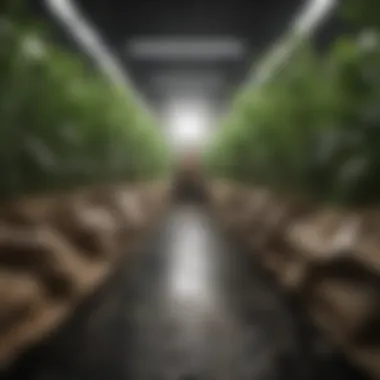
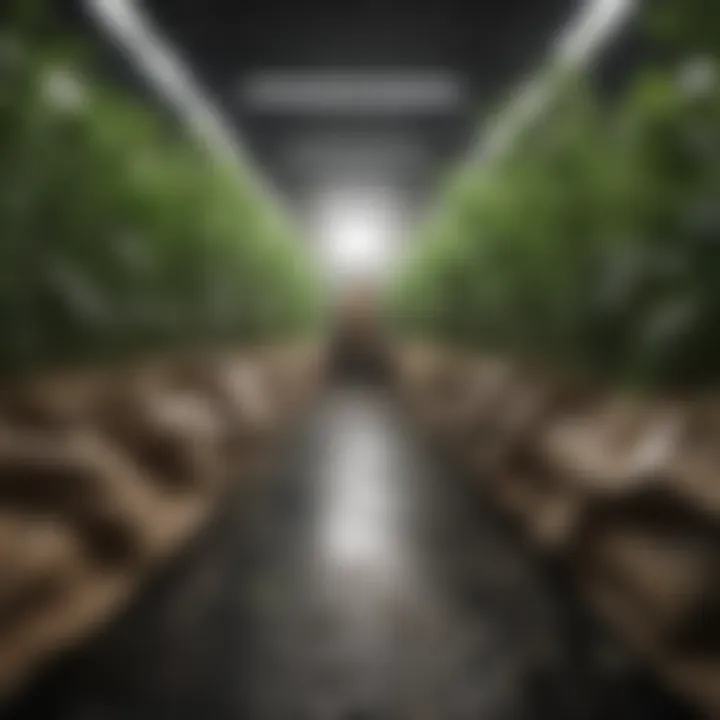
Moreover, implementing these bags fosters a more sustainable growing environment. For urban farming initiatives, the lightweight nature of these bags allows for more efficient soil management, especially in urban areas where soil quality is often compromised.
By considering both the biodegradability of materials and their effects on soil health, farmers can make informed decisions. This careful approach enhances the farming experience while promoting ecological stewardship. The crucial takeaway is that, when responsibly chosen and disposed of, disposable grow bags can bring about significant benefits to both plants and the environment.
Practical Applications of Disposable Grow Bags
Disposable grow bags serve a pivotal role in various agricultural contexts. They are not just a passing trend; their practicality extends across home gardening, professional horticulture, and urban farming initiatives. The adaptability of these bags can significantly impact how crops are cultivated, nurtured, and harvested. By examining these applications, we can better appreciate how disposable grow bags can contribute to a more efficient and sustainable approach to growing plants.
Home Gardening
In home gardening, disposable grow bags offer a level of convenience that many amateur gardeners find appealing. These bags simplify the planting process and can be easily positioned in various outdoor or indoor environments. When gardeners have limited space, these bags act as a flexible solution. They can be placed on patios, balconies, or even within a small back yard.
One notable benefit is the control over soil quality and drainage. Because these bags are designed for optimal aeration, plants tend to develop a healthier root system compared to traditional containers. Whether growing tomatoes, peppers, or herbs, the quicker drainage reduces the risk of overwatering, a common issue among home gardeners. This is particularly true in rainy seasons or wet climates where excess moisture can spoil crops.
About maintenance, when the growing season ends, consumers can easily dispose of these bags rather than cleaning and storing traditional pots. This saves time and helps maintain an organized garden space for the next planting cycle.
Professional Horticulture
For professional horticulturists, the benefits of using disposable grow bags are substantial. These bags allow for swift planting, especially in large-scale operations where time and efficiency are of the essence. Farmers can prepare plots faster and move them around based on growth progress or market demands.
Further, the elimination of soil-borne pathogens is crucial in a professional setting. Since disposable grow bags minimize contact with contaminated soils, they contribute to healthier plants and higher yields. This is vital when growers are working with high-value crops such as strawberries or ornamental flowers.
Moreover, during events like plant shows or exhibitions, horticulturists often need to present their plants in the best possible condition. Disposable grow bags are ideal for this setting since they are clean, professional-looking, and lightweight, making them easy to transport. The immediate, clean presentation can often influence buyer decisions, emphasizing quality and care in horticultural practices.
Urban Farming Initiatives
Urban farming has seen a renewed interest in recent years, particularly given the increasing focus on sustainability and local food sources. Disposable grow bags fit perfectly within this framework, allowing urban dwellers with limited land to cultivate their food. They also make it feasible to repurpose underutilized spaces, such as rooftop gardens or community lots.
These grow bags support a wide variety of crops, paving the way for community gardening efforts. For example, neighborhoods can band together to grow fruits and vegetables in a shared space, fostering communal ties while enhancing food security.
Furthermore, urban settings often present unique challenges like limited soil quality and contamination. Disposable grow bags can navigate this by providing a controlled environment for growth, ensuring that what’s being harvested is safe and healthy.
"Urban agriculture is not just about providing food; it's about community, education, and scalability. Using tools like disposable grow bags can significantly enhance these initiatives."
In summary, the practical applications of disposable grow bags stretch far and wide. Home gardeners enjoy manageable gardening tasks, professionals enhance efficiency while presenting quality plants, and urban initiatives capitalize on space-efficient solutions. All in all, these bags are transforming how various stakeholders approach their agricultural practices, each according to their unique needs and circumstances.
Cost Analysis: Disposable Grow Bags vs. Traditional Planting Methods
When discussing the viability of disposable grow bags compared to traditional planting methods, it’s crucial to analyze them from a cost perspective. Many growers have to navigate a minefield of expenses, whether they’re cultivating lush gardens in their backyard or running a commercial farming operation. Cost analysis plays a significant role in deciding which method is more beneficial. Disposable grow bags might present a more straightforward, less resource-intensive option, making them a tempting alternative.
Initial Investment and Long-Term Savings
Starting with the initial investment, disposable grow bags require a different financial outlay than regular pots, soil amendments, and machinery associated with traditional planting practices. While the upfront cost of disposable grow bags may appear higher per individual unit, it’s essential to consider the ease they provide. For instance, after planting, these bags can often eliminate the need for pots or transplanting equipment, reducing both labor time and the cost of materials.
When we look at the long term, growers can see substantial savings. Think about the costs of water, fertilizers, and maintenance associated with traditional methods. In contrast, disposable grow bags promote efficient water management and often come with built-in aeration properties—enhancing plant health and growth.
"In many scenarios, the ability to reduce overspending over time makes disposable grow bags not only an affordable option but also a smart investment for future harvests."
To provide some clarity, here are a few key points to take note of regarding initial investment and long-term savings with disposable grow bags:
- Labor Costs: Disposable bags can minimize labor for potting and repotting. One or two workers can handle several plants at once.
- Material Costs: Fewer materials are needed overall, which brings costs down.
- Risk Reduction: Their design reduces the risk of soil-borne diseases, leading to healthier plants and possibly larger yields.
Cost-Effectiveness in Small Scale Farming
In small-scale farming, the dynamics shift even more, leaning towards the cost-effectiveness of disposable grow bags. For hobbyists and small farmers, financial margins can be tight, making every penny count.
Using disposable grow bags can actually free up resources that can be redirected towards more impactful areas, like pest control or organic fertilizers. Plus, the lightweight nature of these bags means that shipping and transport can be easier and less expensive, and set up can happen quickly with little to no equipment.
The following factors contribute to the cost-effectiveness of disposable grow bags for small-scale farms:
- Scalability: They fit well into crop rotations and diversity due to their portable nature.
- Seasonal Flexibility: With easily removable grow bags, growers can adjust their planting strategies based on weather or pest pressures without big investments.
- Reduced Waste: Focusing on density and short-season crops allows for maximizing yield without resorting to heavy investment in traditional infrastructure.
Selecting the Right Disposable Grow Bag for Your Needs
Selecting the right disposable grow bag is not just a matter of convenience; it's a crucial decision that can have lasting repercussions on the success of your gardening or agricultural endeavors. With various types and specifications available, understanding what suits your particular needs will pave the way for healthy crop growth and efficient resource use. Making an informed choice in disposable grow bags helps farmers and gardeners to maximize their yield while minimizing resource wastage.
Considerations Based on Crop Type
When choosing a disposable grow bag, the type of crop being cultivated plays a pivotal role. Different plants have distinct needs, and aligning those with the properties of the grow bag can significantly affect growth outcomes. For instance, larger vegetables like tomatoes or cucumbers would benefit from more robust bags that can support their weight and root growth, while herbs or smaller plants might thrive in lighter, more breathable options.
Moreover, certain crops require specific drainage and aeration conditions. For example, plants native to drier climates often do better in bags that allow for increased airflow, as they thrive in those environments. On the flip side, crops that prefer a moister setting would prosper in bags that retain water more efficiently.
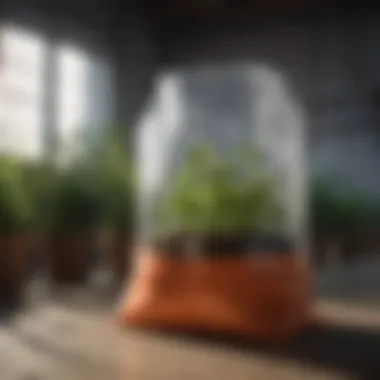
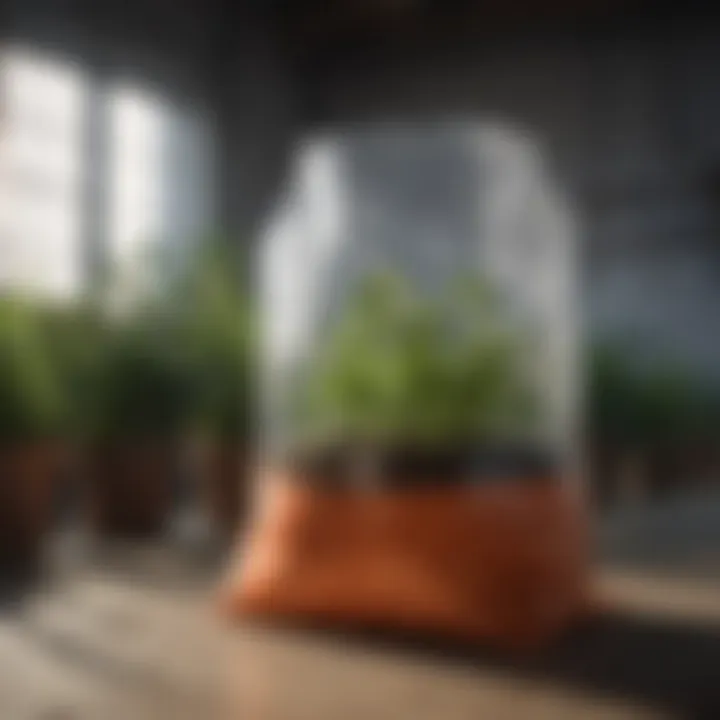
Some notable factors to consider:
- Weight of the Crop: Ensure the bag can support the mature weight of the plant.
- Root System Depth: Deeper-rooted plants need taller bags, while shallow-rooted ones don’t.
- Plant Growth Type: Indeterminate plants (which keep growing) versus determinate plants (which grow to a certain size) will require different bag strategies.
Size and Volume Specifications
Getting the right size and volume for your disposable grow bag is just as crucial as choosing the right type based on crop. Every plant has its ideal space for growth, and not all bags are created equal. If a bag is too small, plans could become root-bound, stunting growth and potentially leading to failure. Conversely, a bag that is too large may waste resources and complicate maintenance efforts.
Here are some pointers to keep in mind:
- Volume: Consider how much soil is optimal for the plant's growth. For example, leafy greens typically require less volume compared to larger fruiting plants.
- Diameter: This aids in spacing multiple bags if you’re creating a garden system. A wider diameter allows for better root spread and nutrient absorption.
- Height: The depth of the bag matters, especially for crops with extensive root systems.
In summary, selecting the right disposable grow bag is a critical step in ensuring a productive gardening or farming experience. Pay attention to crop type, size, and volume specifications for ideal results. Making thoughtful choices in these areas not only optimizes plant health but also enhances overall satisfaction with the growing process. This can lead to substantial benefits in both home gardening and professional horticulture operations.
Challenges and Limitations
When considering disposable grow bags, it is crucial to weigh their potential benefits against the challenges and limitations they might bring. Understanding these facets not only enriches the knowledge of gardeners and farmers but also influences better decision-making in crop management practices. Areas like durability and environmental impact play significant roles in determining the overall effectiveness and sustainability of these products.
Issues of Durability
Durability stands as one of the foremost concerns regarding disposable grow bags. Many users expect a certain lifespan from their growing containers, often drawn to the idea of convenience without considering the practical usage over time. Disposable grow bags, unlike their more robust counterparts, are typically designed for single-season or short-term use. Although they are made from materials that promote growth by allowing for proper drainage and aeration, they might struggle with holding up against weather conditions. Locations that face heavy rainfall or strong winds can create situations where these bags can tear or degrade faster than anticipated.
Moreover, for those with heavier crops or particularly vigorous plants, the strength of the grow bag can become an issue. In instances where a bag fails, plants can suffer from root structure damage or water loss that dramatically affects yield. For gardeners eager to embrace new technologies, it is essential to understand the specific requirements of their plants and how disposable options will hold up in their unique climate and growing conditions. A thoughtful assessment of durability may mean the difference between a thriving garden and one that bites the dust.
Environmental Concerns with Non-Biodegradable Options
While the intent behind utilizing disposable grow bags is often tied to convenience and efficiency, there are growing concerns regarding the environmental implications, especially regarding non-biodegradable options. Many varieties of these bags are made from plastic materials that, once disposed of, contribute to the increasing plight of landfills and ocean pollution.
In recent years, a clarion call has been growing around the need for sustainable practices in agriculture. If disposable grow bags do not break down into the environment, they can hinder the health of soil and ecosystems, introducing microplastics and toxins that can seep into the ground and water supply. Garbages that inherit this type of waste from disposable grow bags risk creating problematic situations for local wildlife and plant life, leading to a cycle of harm.
"The plastic dilemma is one that we can no longer ignore; understanding our choices can lead toward more sustainable agriculture."
The challenge here lies in selecting disposable grow bags that are genuinely environmentally friendly. Some products on the market are designed to ensure biodegradability, but discerning consumers must navigate advertisements and claims critically. Innovators are working hard to create alternatives that don’t just play lip service to sustainability but stand the test of rigorous environmental scrutiny. It becomes the responsibility of the buyer to rise above advertising to make informed decisions.
In summary, while disposable grow bags offer various advantages, the challenges—stemming from durability concerns and environmental implications—should never be overlooked. By understanding these limitations, farmers and gardeners can make prudent choices that not only foster better growth but also uphold strong commitments to sustainability.
Future Trends in Disposable Grow Bag Technology
The ongoing evolution of disposable grow bags is pivotal in the realms of agriculture and horticulture. Staying ahead in technology isn't just a matter of convenience; it's about sustainability and efficiency that can shape the future of farming. As we peer into the future of grow bags, some notable elements emerge: innovations in materials and design, alongside anticipated growth in market adoption.
Innovations in Materials and Design
Recent advancements in materials are turning heads in the industry. Manufacturers are experimenting with biodegradable substances that retain functionality while reducing environmental impact. For example, some new options integrate agricultural waste, like corn starch or recycled paper, into their construction. These innovations not only help minimize landfill waste but also provide a nutrient boost to plants as the bags degrade.
Improved permeable designs are also making their rounds. Not just your basic bag anymore, these have adapted to different weather conditions and soil types, facilitating better aeration and drainage. Such designs can maintain an optimal environment for plant roots, promoting better growth and healthier yields.
Moreover, some companies are stepping out of the box, using innovative patterns or textures on the bags to optimize light absorption without compromising soil health. Each design decision can have significant implications—what was once a simple vessel is evolving into a vital tool in modern gardening.
"The future of disposable grow bags is not just about being practical but also about being part of a greater ecological solution."
Potential Market Growth and Adoption Rate
As we journey forward, the market for disposable grow bags is likely to flourish. Factors driving this growth include the continuous rise in eco-conscious consumerism and urban gardening trends. More people are looking for solutions that allow them to grow food with minimal space and resources. Disposable grow bags fit beautifully into this niche by providing easy-to-use, lightweight options that are ideal for small-space urban settings.
Further, the integration of technology into farming and gardening is primed for exponential growth as well. Think smart grow bags equipped with sensors that monitor moisture levels or nutrient content, feeding data back to users via apps. Such technological enhancements can amplify the efficiency and success rates of urban gardening efforts.
The adoption rate could see a significant spike as educational programs promoting these bags grow. As more horticulture enthusiasts become aware of the benefits, and as more retailers stock these cutting-edge products, the once-niche item could become commonplace in both household and commercial settings.
As these trends unfold, it’s clear that disposable grow bags are moving away from the status quo into a leading role in innovation and sustainability practices within agriculture. The potential to harmonize convenience with environmental consciousness provides a glimpse into a more sustainable agricultural landscape.
The End
In recent years, the agricultural landscape has undergone significant transformations. One notable aspect is the rising interest in disposable grow bags, emphasizing their utility and adaptability across varying horticultural practices. Understanding their place in modern agriculture is not merely an academic pursuit; it invites practical implications that resonate with both small-scale gardeners and large-scale agricultural operations.
Summary of Key Findings
The exploration of disposable grow bags reveals several vital considerations:
- Benefits Over Traditional Methods: Effective drainage and aeration are prime selling points. They allow roots to breathe, promoting healthier plant growth.
- Environmental Impact: The conversation around biodegradability highlights a growing awareness among consumers and farmers alike. Many disposable grow bags are designed to degrade, thereby reducing their carbon footprint, which is an increasingly scrutinized element of farming practices.
- Cost Efficiency: While the initial investment might seem daunting, strategically choosing disposable options can lead to long-term savings through increased yield and reduced disease management costs.
- Versatility: From urban gardening to professional horticulture, the adaptability of disposable grow bags caters to diverse farming needs. Their easy transport and setup have revolutionized gardening practices for many.
“The shift towards disposable grow bags isn’t simply about convenience; it is a reflection of shifting norms, where sustainability and efficiency are paramount.”
Final Thoughts on Their Role in Modern Agriculture
The future of agriculture is intertwined with innovation and efficiency. Disposable grow bags stand as a testament to how traditions can evolve while keeping sustainability and practicality in focus. They represent a merging of convenience with ecological responsibility, which farmers and gardening enthusiasts are increasingly prioritizing. As the industry continues to adapt, embracing such tools may very well become essential for success.
As we pave the way for future agricultural practices, it is clear that understanding and integrating disposable grow bags can lead to better outcomes. No longer are they merely a passing trend; they serve as pivotal instruments in fostering sustainable practices and enhancing productivity. The exploration of disposable grow bags, thus, paves the road for a greener, more effective future in agriculture.



